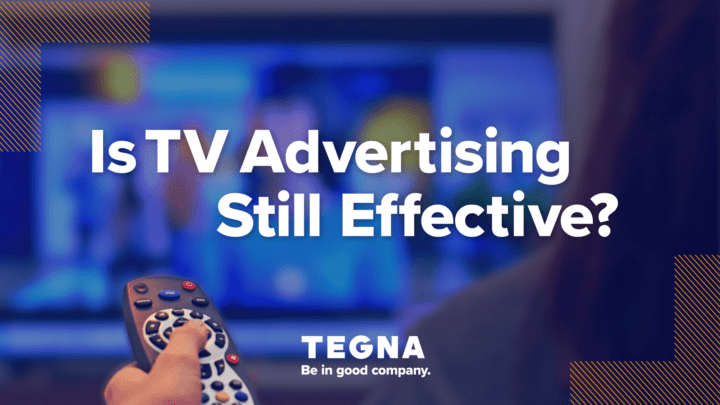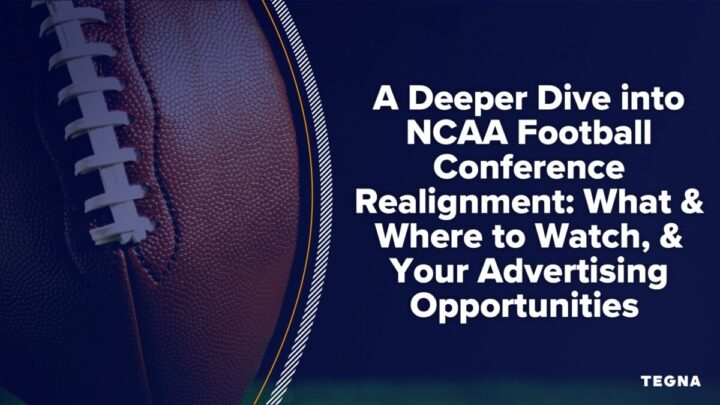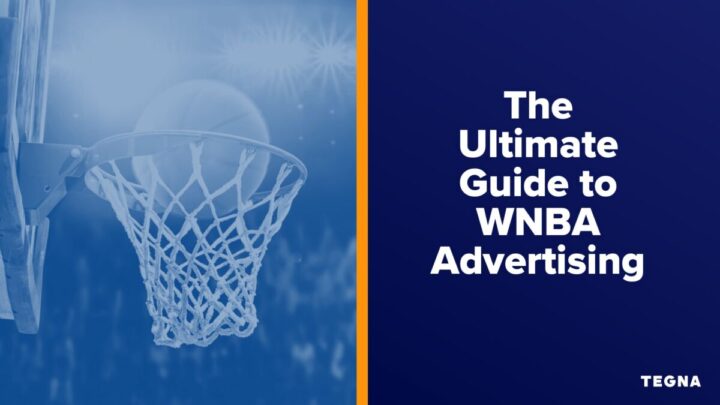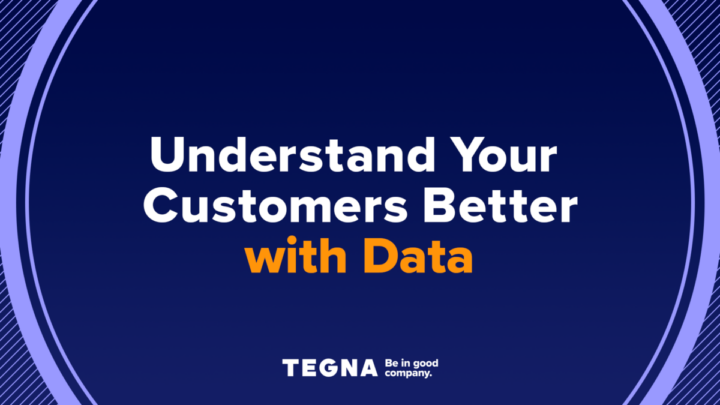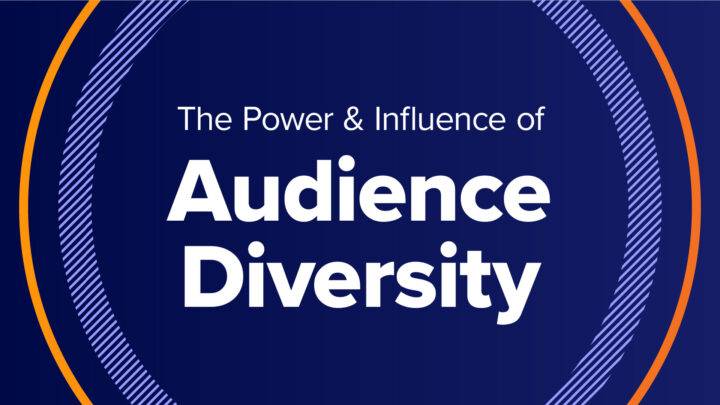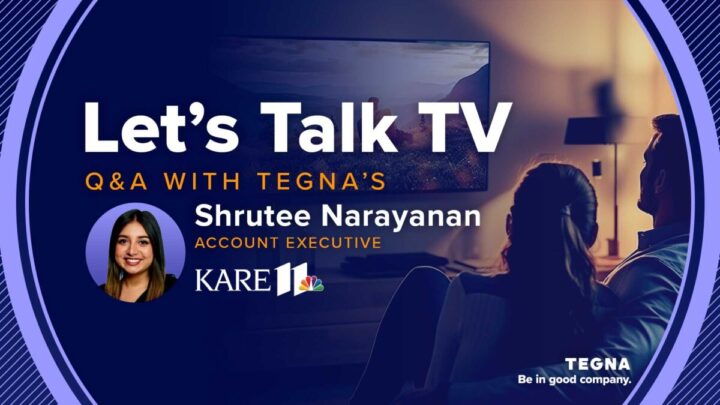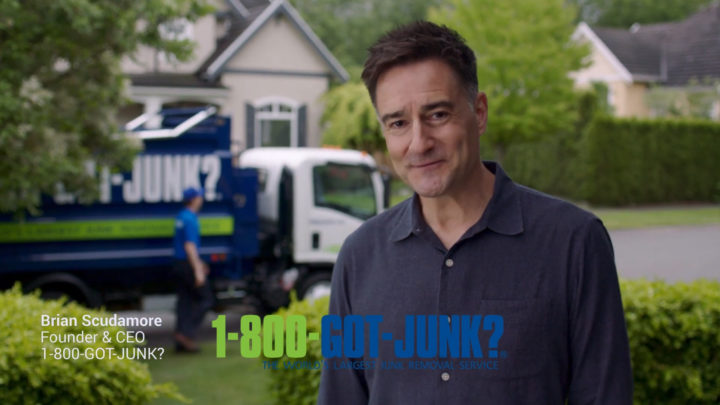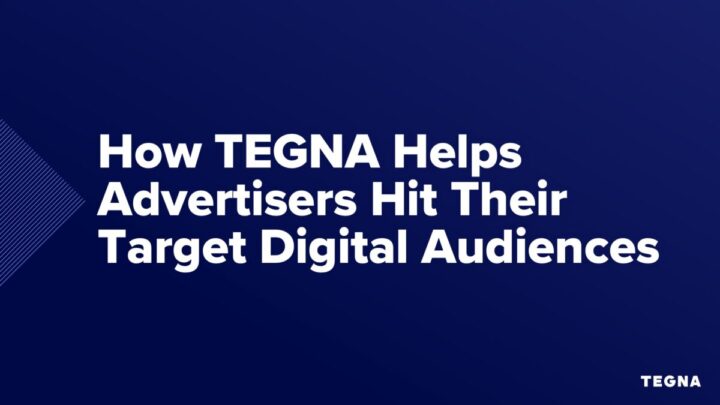Why is Sports Marketing Important? 5 Benefits + Tips
Sports marketing can help advertisers engage with dedicated fans while improving viewers’ association with their brand. Learn more about the benefits of sports marketing.

The passion, excitement, and competitive spirit inherent in sports create a uniquely emotional connection and sense of community with viewers, captivating audiences with life-changing inspiration.
For advertisers, sports present a powerful opportunity to align brand messaging with these moments of connectivity, fostering a lasting impact on brand engagement and loyalty. All it takes is an effective game plan for a sports marketing campaign.
Not sure how or where to get started? Let’s dive in.
What is a Sports Marketing Campaign?
Sports marketing campaigns are all unique to a brand but still follow the rules of marketing 101: reaching the right audience at the right time, with the right message, and sparking action.
A sports marketing campaign is a great way to align with a sporting event, team, or athlete to create brand awareness, generate interest, and engage a target audience. This can take many forms: advertising through linear broadcast, streaming TV, and online digital platforms. Key elements of successful sports marketing campaigns include:
- Strong, consistent, and distinctive branding (Nike’s logo has been consistent since its original design in 1971)
- An alignment of values between the brand, audience, and team/athlete (common themes include hard work, dedication, big wins, heartbreak, and healthy lifestyle)
- Relevant and engaging content (contests, giveaways, fan events, interactive experiences, and fan loyalty programs)
- Community pride (charitable initiatives, youth programs, and events to build goodwill and foster a positive image
Sports fans are passionate and engaged, and brands that align with the excitement, values, and sense of community that come with sports will see a halo effect. That’s because aligning with the hometown team or favorite all-star creates positive brand associations that help to drive consumer trust and loyalty.
How to Develop a Sports Marketing Campaign – 3 Steps
Creating a sports marketing campaign involves several key steps to ensure its effectiveness and success. However, remember that each campaign is unique to a brand’s target audience, goals, and KPIs. Flexibility, creativity, and adaptability ensure your campaign resonates with your target audience and delivers the desired results.
1. Understand the Target Audience
There are several ways to gain a deep understanding of your target audience: who they are, what they like, want, and need.
No matter the platform, live sports deliver massive audiences on appointment TV, and we know that 81% of sports consumers either completely or somewhat trust brand sponsorships at sporting events, so it’s time to dive deeper into the stat sheet. In this case, it’s important to know what sports they consume – and on what platforms. Here are a few insights to help you draft a great persona profile:
Football & the Superbowl: From the opening kickoff to Super Bowl LVIII, the NFL is a powerhouse regarding viewership. Here’s the highlight reel:
- 82 of the top 100 telecasts of 2022 were NFL games.
- NFL viewership was UP on its largest broadcast partners. FOX and CBS had their most-watched regular seasons since 2016, averaging 19.42M and 18.49M viewers, respectively.
- Sunday Night Football was television’s top primetime show. Sunday Night Football on NBC was up 1% in viewership. It’s the most-watched season of SNF since 2019, with 18.5M viewers.
- Super Bowl LVII was the most watched Super Bowl ever. An average of 115.1MM viewers tuned in to watch the Chiefs take on the Eagles (aired Feb ‘23)
- An estimated 85 M adults have watched a regular season NFL game (including Monday, Thursday, or Sunday Night) via broadcast or streaming over the past year
- 9 in 10 NFL viewers watched regular season games exclusively on broadcast TV
- Although younger generations are more likely than all adults to stream regular season games, 3 in 4 adults 18–24 watch solely on broadcast TV.
What do these insights tell us? Your brand should consider seamless, high-impact commercial activation from the beginning of the NFL regular season, throughout the playoffs, to Super Sunday. From reaching massive audiences in weekly games and adjacent programming to integrated, cross-platform sponsorships, you can meet NFL fans where they are and place your brand front and center.
The Olympics: No other sporting event has the sweep, scope, and stage that is the Olympic Games. The most recent Winter Games in Beijing reached a global broadcast audience of more than 2 billion people. In the 2024 Olympics, all eyes will turn to Paris to see the best in the world battle for gold.
Could your campaign do the same? It’s quite possible.
Olympic sentiments have a profoundly positive effect on advertisers. Phoenix Brand Effect found that 88% of viewers believe companies provide a public service by supporting athletes, and 85% of viewers would feel a sense of pride if their company supported the Olympics. When asked what words describe brands that advertise in the Olympics, the top three answers are hopeful, inspirational, and patriotic.
What do these mean? Investing in an event that brings the world together can elevate your brand. Use ad creative that makes emotional connections. These audiences value human stories over a product and want content that includes messages of positivity, unity, sportsmanship, equality, diversity, and the quest for greatness. Empathy generates recall.
March Madness: Estimates say companies lose more than $17.8 billion in worker productivity due to the NCAA Championship Tournament. However, an effective advertising campaign can help create a Cinderella story. That’s why college alum sports fans are more loyal and passionate about teams from their alma mater. Why?
- Tradition: Marching bands and fight songs are unmatched and create an emotional bond to the university and a connection to the university sports teams.
- Rivalries: They run deep and are generations long. These animosities are carried with alums wherever they may settle.
What do these insights mean? “Advertising locally with teams in your area reaffirms a brand’s place in the community,” says Dave Neway, former VP of Ad Sales Marketing at TEGNA. “The tournament offers advertisers a lot of frequency and exposure to a valuable audience, and by aligning with the unique content opportunities that TEGNA offers, your brand has an opportunity to be the talk of the town.”
Baseball: Beyond 162 regular season games, MLB hosts various events that attract widespread attention, such as the All-Star Game, postseason playoffs, and the World Series. For example, this year’s 15 Opening Day games shattered a record: 172 million minutes watched on MLB.tv, breaking the previous daily record of 121 million. But what’s more interesting is that the audience for America’s favorite pastime is starting to skew younger. MLB.com has gathered the following interesting stats:
- Baseball and softball combined to be the most participated sport in the United States among kids ages 6 to 12, with more than 6.5 million participants (SFIA’s Team Sports trends report)
- MLB has more attendees in the 12-17 age group than any of the major pro sports leagues (Simmons)
- The median age of followers on every MLB social platform is 25-34.
- At the 2022 All-Star break, ratings among viewers ages 25-54 were up 4% percent this season compared to 2023.
- The Boston Red Sox increased their digital ads from 85 to almost 300 in 2021, with the majority targeted toward a younger demographic. Single-game ticket sales rose from 8,000 per game in 2019 to 13,000 in 2021. (SBJ)
What do these insights mean? With a family-friendly and community-oriented approach, brands like the Boston Red Sox example above can benefit from advertising.
Chris Marinak, MLB’s chief operations and strategy officer, laid out the playbook when he told MLB.com, “It’s all part of an integrated strategy of meeting fans where they are, delivering content to them so they feel welcome and included, using digital tools to understand who they are – and growing the product on the field. We want to be welcoming and inclusive. There are lots of ways to watch the games – and there are lots of ways to be a fan.”
2. Create a Media Plan
Now that we know more about the target audience of sports fans, you’ll want to draft an effective media plan. This includes selecting the right advertising channels for your creative. Some of the most effective platforms to reach sports fans include:
- Broadcast Television: Sports and live events drive high viewership numbers on local broadcast channels, helping the medium solidify its title as one of the most effective advertising platforms. Additionally, consumer trust is exceptionally high when ads align with local news (including its sports content), thanks to the halo effect.
- Streaming TV: Streaming is a growing platform for sports viewership, with the NFL setting new records for streaming with Super Bowl LVI. Combining linear broadcast with streaming TV is the 1-2 punch your brand needs to KO the competition.
- Digital: There are 2.14 billion online shoppers globally and 230.5 million in the US alone – 70% of the population. Going for the hat trick, adding digital to a cross-platform campaign allows audience, location, behavioral, and contextual targeting and retargeting to boost brand awareness and drive traffic and qualified leads to your website.
- Podcasts: Podcasts offer a targeted and engaged audience of sports enthusiasts, providing an excellent opportunity for advertisers to reach a dedicated and loyal fan base. The Video Advertising Bureau says podcasting is the “peanut butter to TV’s jelly,” and “adding podcasts to the media mix can build consideration and purchase intent.”
As the cherry on top, the Edison Research Podcast Super Listener Report found that 86% of people who frequently listen to podcasts say they recall ads on podcasts more than any other channel – even more than social media.
3. Analyze Results
When a player is underperforming, it’s time to look at the tape and develop an improvement plan. The same goes for a marketing campaign. An attribution tool can help measure campaign results across platforms and connect the dots between ad viewership and outcome metrics such as conversions. Be sure to use the stats and data as a competitive advantage and use it to inform campaign optimizations in the future.
5 Benefits of Sports Marketing
With the massive viewership, loyalty, engagement, and spending power sports fans possess, sports marketing is an avenue to explore and see if it’s relevant to your brand goals, KPIs, and target audience. Some of its benefits include:
1. The Power of Inspiration
Sports have universal appeal and speak to most Americans’ values: hard work, dedication, perseverance, teamwork, and resilience. Sports can unite communities and foster a sense of belonging, evoke powerful emotions, fight for social justice, and positively affect a person’s physical and mental health. An athlete’s achievements and story of overcoming challenges can inspire and motivate others to strive for greatness in their own lives.
Whether a local team or a national squad, sports can unite people from diverse backgrounds, creating a shared sense of identity and pride. And your brand can be a part of the magic that sports provide. Other benefits of sports marketing campaigns include
2. Connecting with Viewers Live
For fans, watching live sports on TV is a habit. Brands can leverage the excitement and positive emotions associated with an event like the Super Bowl to create real-time interactions, memorable experiences, and events, increasing brand recognition, loyalty, and consumer trust.
Additionally, live-event viewers are less likely to fast-forward commercials for several reasons. Viewers know that sports and commercials are teammates. Commercials are part of the live-viewing experience, and viewers want to watch them to discuss socially. Plus, commercials can’t be skipped in a live broadcast setting – unless the viewer changes the channel or takes a bathroom break.
3. Connecting with Loyal Fans
From the Cowboys in Dallas to the Bills in Buffalo, the Guardians in Cleveland to the Cardinals in St. Louis, and all the teams in between, their fans are loyal. Through the good times and the bad, they buy the gear, watch highlights, and talk around the water cooler. When they love their team, they love their team’s supporters and can quickly become advocates for your brand.
4. Improving Brand Association
As it does in aligning with local news, the halo effect of sports can enhance a brand’s image and reputation. Sports are often associated with teamwork, perseverance, and fair play. By associating with these positive attributes, brands can improve their perception among consumers. Supporting sports events, athletes, or community initiatives can position brands as supportive and caring, leading to a positive brand image and increased consumer trust.
5. Increasing Sales
Sports have a significant economic impact at various levels. Major sporting events like the Olympics or the World Cup can drive tourism, boost local economies, and create job opportunities. The sports industry encompasses various sectors, including broadcasting, sponsorship, merchandise, and hospitality, generating substantial revenue and contributing to economic growth.
Why Sports Marketing Matters
Sports have a massive global audience, with millions of fans passionate about their favorite teams and athletes. Sports marketing allows brands to leverage the passion, reach, and emotional connection that sports create to enhance their visibility, connect with a target audience, and achieve their marketing and business objectives.
Associating with sports can also enhance a brand’s image. Sports are often associated with teamwork, determination, excellence, and fair play. By aligning with these values, brands can enhance their reputation and be seen as supportive of the community and its passions. This positive association can lead to increased consumer trust and loyalty.
TEGNA’s Massive Reach Helps Sports Advertisers Score Big
TEGNA offers brands seamless, high-impact commercial activation for all sports seasons. From reaching massive audiences in weekly games and adjacent programming to our integrated, cross-platform sponsorships, we meet sports fans where they are and place your brand front and center.
Join us in the ultimate game-changing experience that captivates millions of viewers and maximizes your reach. Contact us today to learn more!
Frequently Asked Questions About Sports Advertising
What is Sports Advertising?
Sports advertising leverages the excitement of live sports to promote brands or products. Brands can reach massive audiences through TV commercials, sponsorships, and athlete endorsements. This builds brand awareness and positive associations and connects with passionate fans. Sports advertising is a powerful marketing tool for reaching millions.
What Are the Different Types of Sports-Related Advertising?
Sports advertising goes beyond the TV screen. Brands can sponsor teams or athletes, getting their logo on jerseys or stadiums. They can also partner with broadcasters for commercials or podcast air time. Brands can also engage athletes to promote products in endorsement deals.
How Effective is Sports Marketing?
Studies show sports marketing can be very effective. Nearly half of viewers (49%) perceive a sponsor more positively after a sports event. This emotional connection with passionate fans translates to brand loyalty and increased sales.
What Makes Sports Marketing Unique?
Sports marketing taps into the emotional passion of fans. Unlike traditional marketing, it thrives on live events, creating a real-time connection with captive and loyal audiences. This emotional bond with teams and athletes fosters brand loyalty and drives sales in a way few other channels can.
Want to learn more about sports advertising? Be sure to check out:


